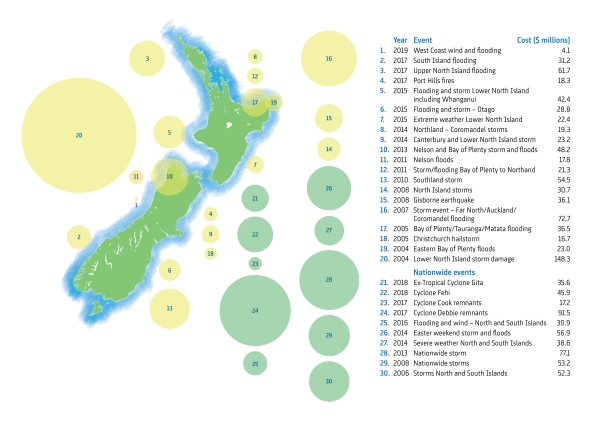This step helps you assess your resilience to current climate risk.
You will identify how the weather and climate affect you currently, including the range of temperature, rainfall or other factors beyond which the impacts are unacceptable. Don’t forget that the effects of weather and climate can be indirect, including effects on suppliers, partners, and infrastructure such as roads and bridges. Think widely and consider the bigger picture.
This will make it easier for you to consider how future climate change might affect you in Step 3.
Your resilience to a changing climate depends on your local conditions, your preparedness and your risk management.
2.1. What is your attitude towards risk?
Task 2.1: Write down how you currently manage your climate risk, e.g. to manage drought you bring in water.
The changing climate offers both opportunities and challenges, which means there are positive and negative aspects to managing the associated risk. How you manage risk is influenced by your attitude to risk.
People’s attitude to risk varies according to how important the decision is, past experiences and other risks faced besides climate risks. Think about how you currently manage risk, for instance:
- how you manage the effects of weather and climate, including seasonal changes
- your current insurance policies, including fire, flood, drought and income protection
- how you manage your infrastructure, especially those vulnerable to weather and climate.
Also think about whether:
- you or your business can afford the consequences of changes in climate and/or extreme weather
- you can insure against asset damage and income losses and at what cost
- there are benefits or other opportunities that can be realised at little cost from current or future climate.
2.2. How do weather and climate affect you and your business/organisation?
Task 2.2: Identify and read through any information that you have on your local climate, weather, environment, or any related information. See the Resources section as part of the Toolbox to get started. Businesses, organisations, your local council, friends and family may also be able to help. Use Table 2.2 in the Taskpad to record how climate and weather affect you and your business/organisation.
Record how you manage weather and climate risk currently, by considering the current climate where you are and what that means for you (Part A). What are the opportunities and challenges associated with your current climate for your business/organisation?
Next consider the more specific impacts of weather and climate. Write down past extreme weather events that have affected you, including details such as the amount of rainfall or seasonal totals (Part B).
- Consider what actions or decisions you had made previously as a result of weather events. What were the impacts of those decisions? Were there any unforeseen opportunities or challenges?
- Consider the key climate-sensitive assets or parts of your organisation/ business, e.g. a road or fence.
- Identify any critical thresholds (the limit where a rapid change occurs) that were exceeded and then had a significant impact, e.g. 100mm of rain led to the dam overflowing; a temperature of -2°C led to frost sensitive crops dying.
- Note where you got your information from and whether there are any limits to it. What further information do you need?
To start your thinking, the following map shows some major weather events over the last few decades. How did the extreme weather events below affect you and your business or organisation? What issues or opportunities arose?
Insurance costs (some provisional and some adjusted for inflation) related to recent severe weather events. For a full list of recent and historic weather events see the Insurance Council’s website.
- Identify any critical thresholds (the limit where a rapid change occurs) that were exceeded and then had a significant impact, e.g. 100mm of rain led to the dam overflowing; a temperature of -2°C led to frost sensitive crops dying.

